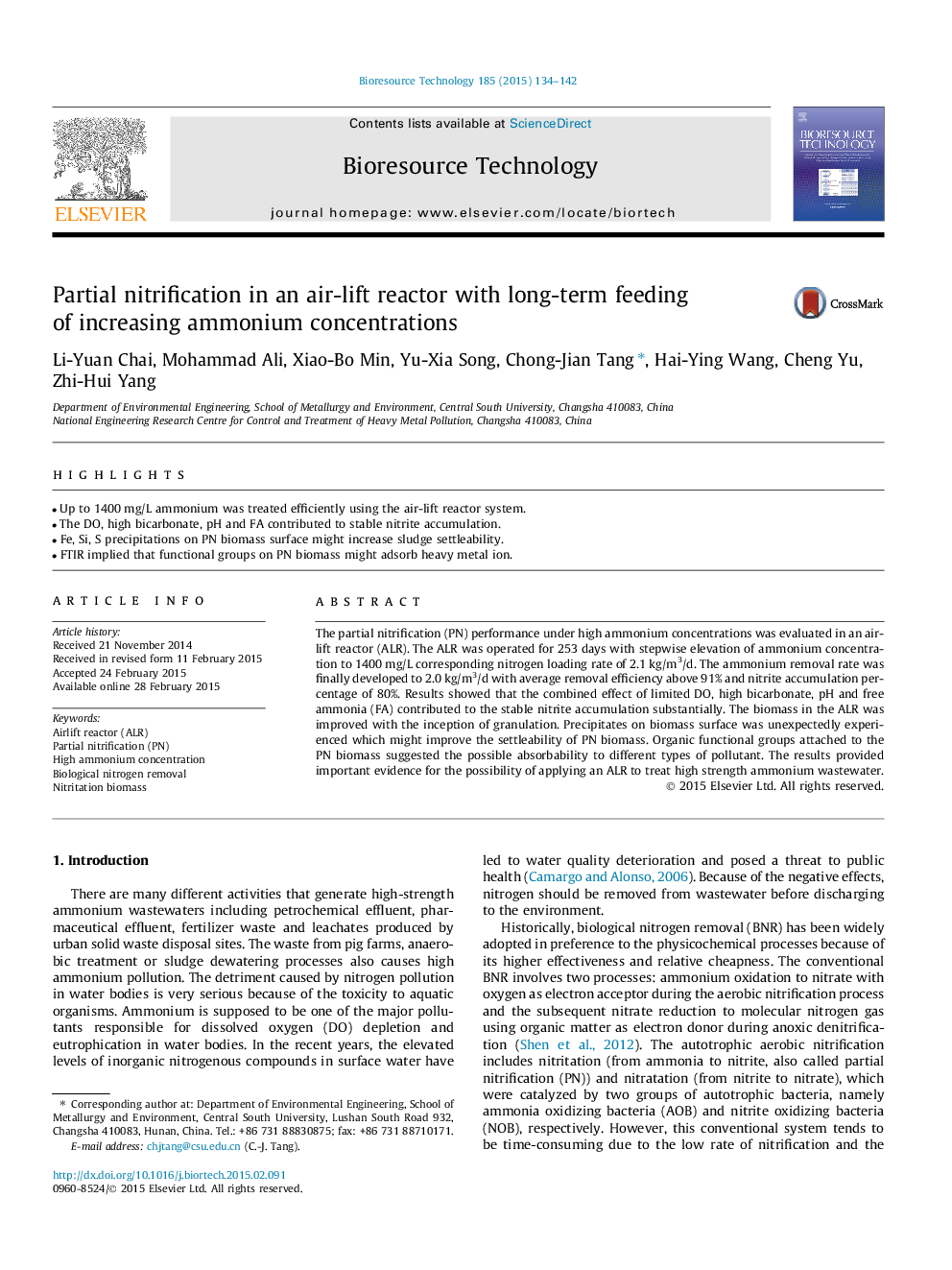| کد مقاله | کد نشریه | سال انتشار | مقاله انگلیسی | نسخه تمام متن |
|---|---|---|---|---|
| 679806 | 1459958 | 2015 | 9 صفحه PDF | دانلود رایگان |
• Up to 1400 mg/L ammonium was treated efficiently using the air-lift reactor system.
• The DO, high bicarbonate, pH and FA contributed to stable nitrite accumulation.
• Fe, Si, S precipitations on PN biomass surface might increase sludge settleability.
• FTIR implied that functional groups on PN biomass might adsorb heavy metal ion.
The partial nitrification (PN) performance under high ammonium concentrations was evaluated in an airlift reactor (ALR). The ALR was operated for 253 days with stepwise elevation of ammonium concentration to 1400 mg/L corresponding nitrogen loading rate of 2.1 kg/m3/d. The ammonium removal rate was finally developed to 2.0 kg/m3/d with average removal efficiency above 91% and nitrite accumulation percentage of 80%. Results showed that the combined effect of limited DO, high bicarbonate, pH and free ammonia (FA) contributed to the stable nitrite accumulation substantially. The biomass in the ALR was improved with the inception of granulation. Precipitates on biomass surface was unexpectedly experienced which might improve the settleability of PN biomass. Organic functional groups attached to the PN biomass suggested the possible absorbability to different types of pollutant. The results provided important evidence for the possibility of applying an ALR to treat high strength ammonium wastewater.
Journal: Bioresource Technology - Volume 185, June 2015, Pages 134–142
